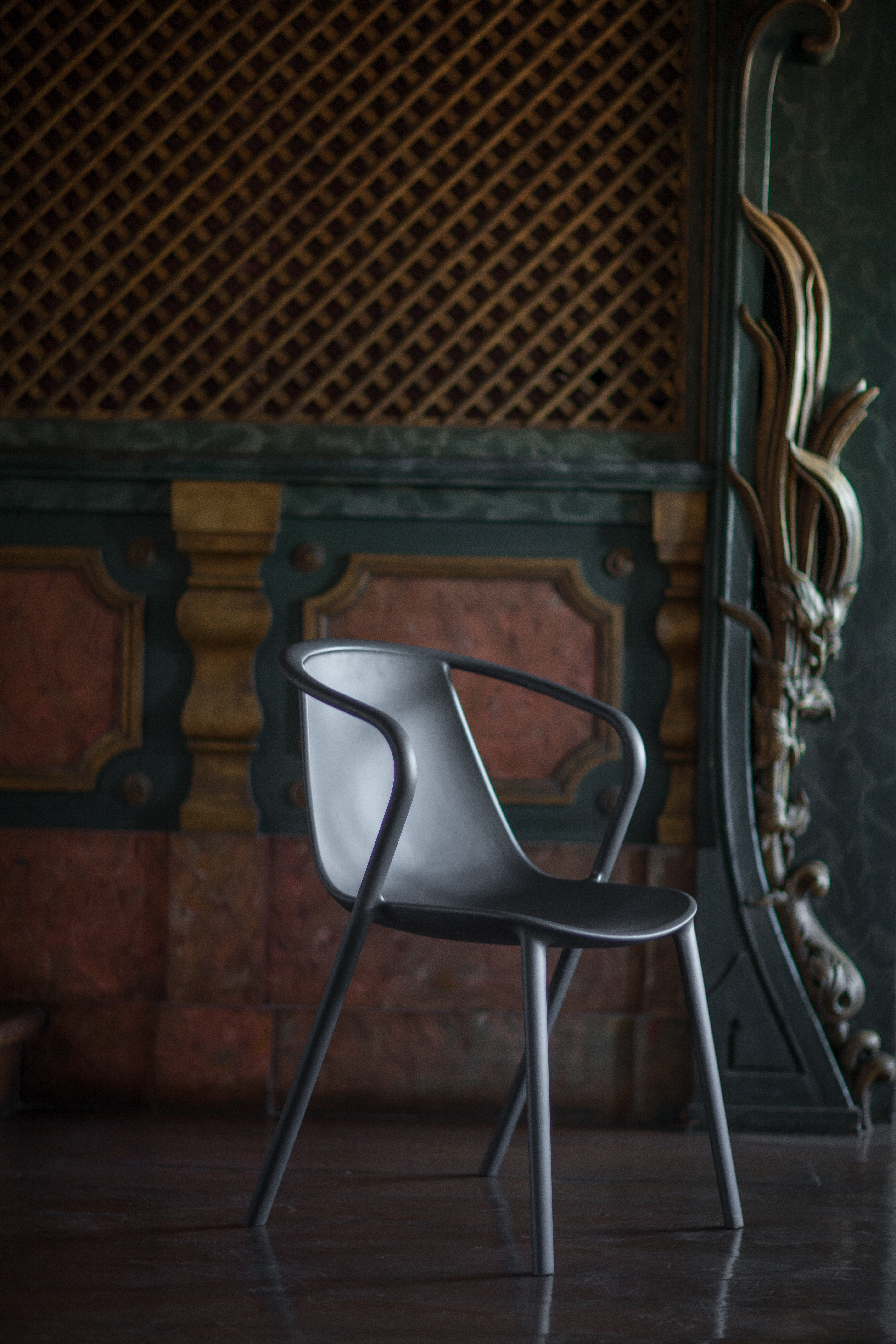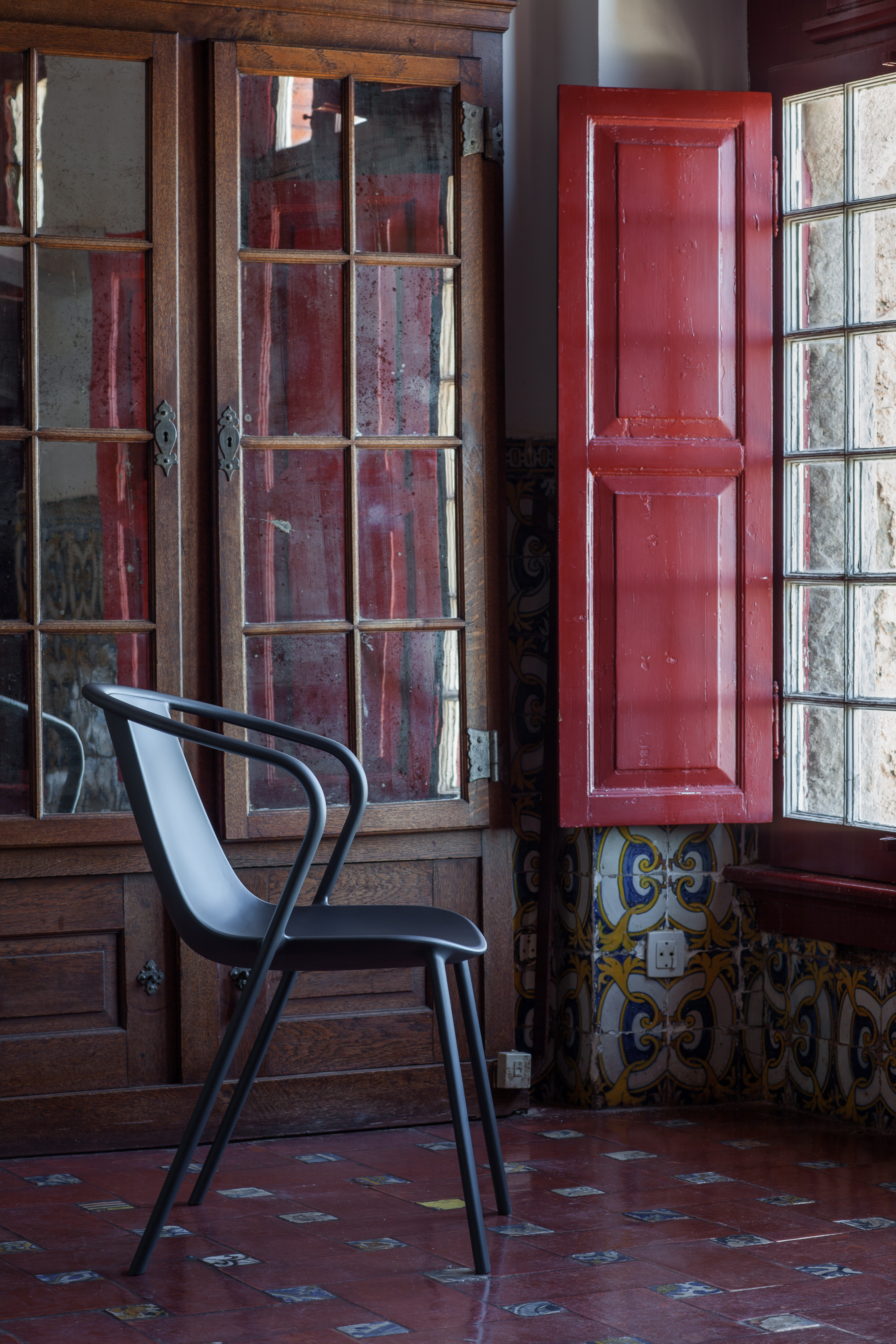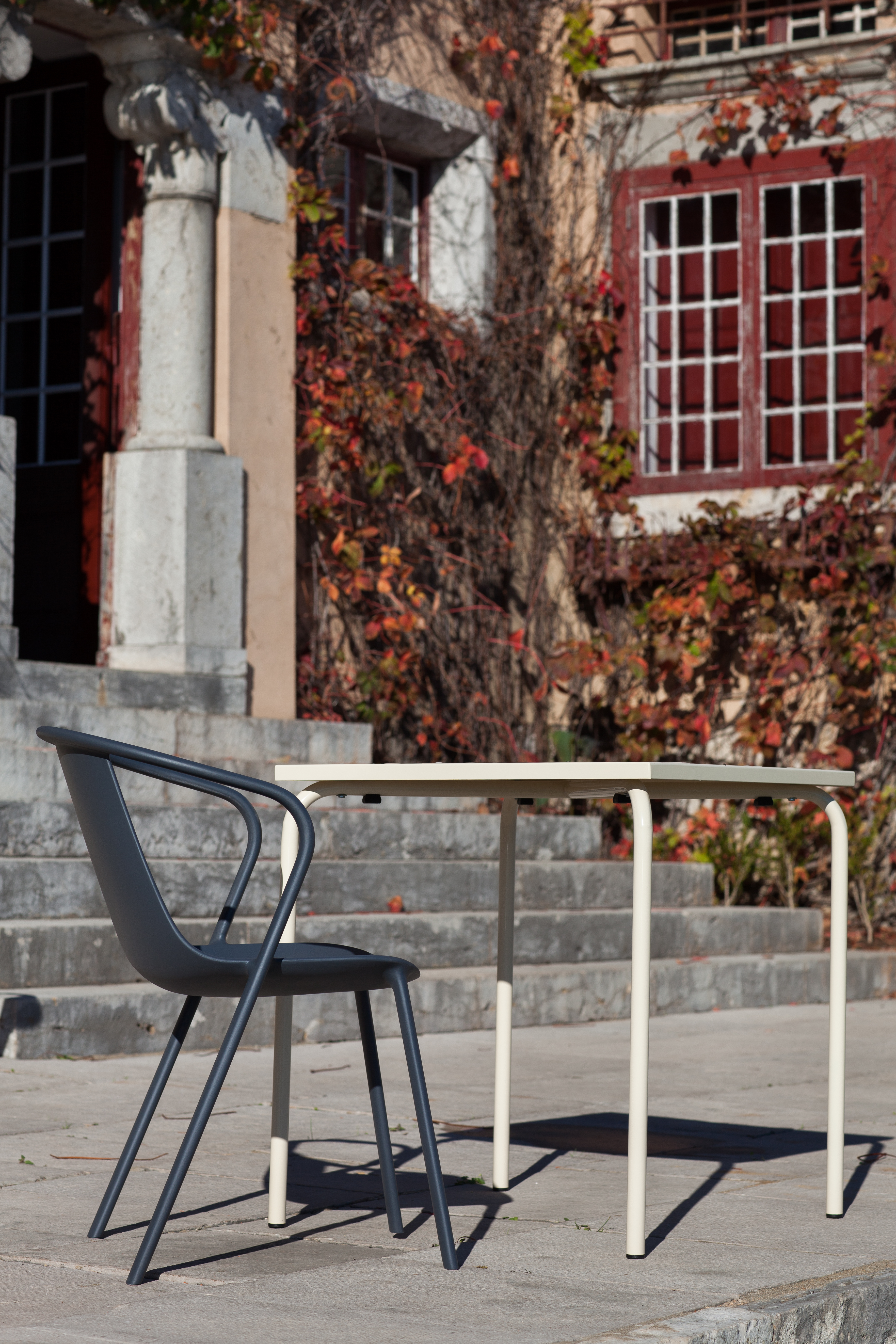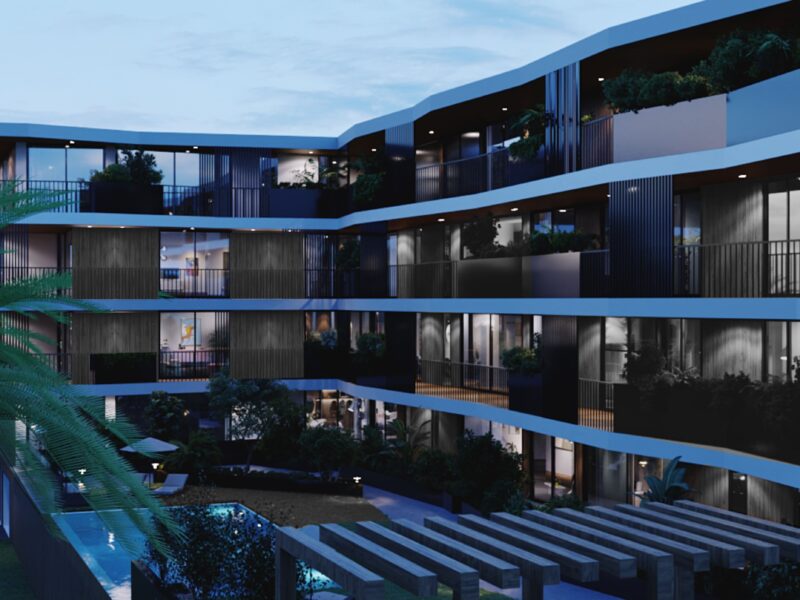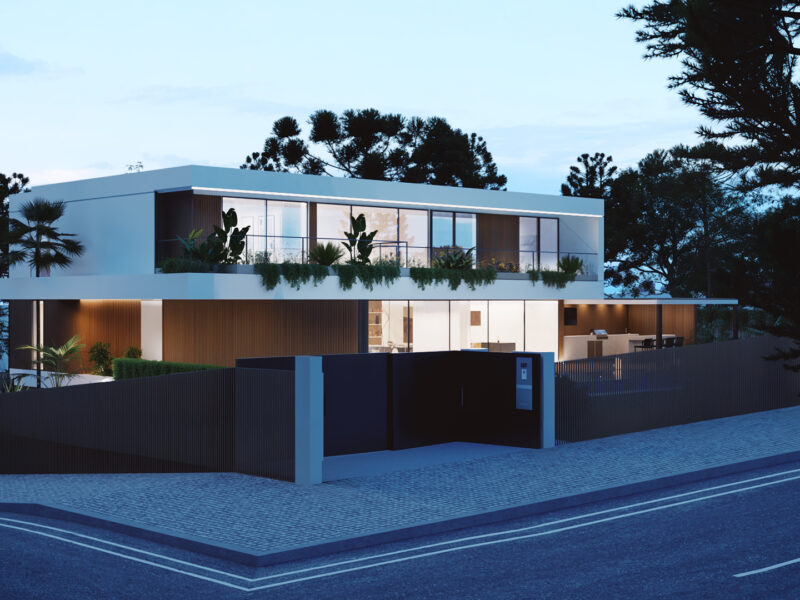Redesign of the most iconic Portuguese Chair
Redesign of the most iconic Portuguese Chair
The “Portuguesa” chair reinforces the identity of the Portuguese outdoor terraces.
Historically, intellectuals, artists and common people enjoy the terraces, where they share opinions and experiences. Tourists, on the other hand, properly referenced by guides or indication of scenic spots, also seek these terraces, particularly the Brasileira in Lisbon.
The “Portuguesa” chair due to its characteristics plays an important role. Ergonomically well designed, with a pronounced slope to the back, it allows the user an extended rest and contributes to the typical Lusitanian image that is always present in any illustrated postcard.
The first chairs appeared in Lisbon in the nineteen thirties and forties. Its tubular steel structure is made up of only four elements: the main structure is a curved steel tube starting from the two back legs and extending up into the armrests and back support. The curved tube that forms the two front legs also serves as the outside support for the seat. The curved and slightly reclined backrest ends at the seat and this is also slightly sloping to the rear and with a curved rim.
Inspired in Bauhaus and some of the pioneers of design tubular chairs, such as Marcel Breuer, Mies van der Rohe and Mart Stam, edited by Thonet, the “Portuguesa” chair became a “vintage” attraction and has been reinterpreted successively by different designers.
Throughout the years there have been innumerous redesigns of this chair, but none caught the true essence of timelessness of the original but that is about to change. The new redesign presents a fundamental design. The chair has undergone very slight changes throughout its original design in order to improve its comfort, but it is still essentially produced according to the original made by plastic air molding technology.
Nuno ladeiro has reimagined the famous Portuguese chair with a few slight changes to the original — mostly to increase comfort — but stays as close to unchanged as possible.
The redesign is made via air-assist injection molding; a low-pressure process that utilizes nitrogen gas to uniformly fill the component as a result of the technique and the unique channels that it produces; clamp tonnage, cycle time, and part weight are reduced, while strength and rigidity are increased.
Year of Production:
2016
Editor:
Colico, Itália
DESIGN:
Nuno Ladeiro
Category:
Design

